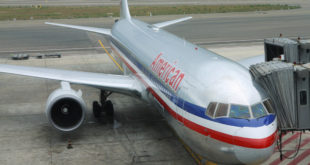Joe Sharkey of the New York Times says it isn’t:
 When I see arguments like this that say the companies were able to adapt better to the rule it makes me wonder two things: 1. If things are better this way now, why didn’t the airline self-enforce this rule on them to get “better at managing their networks around three-hour limits” and 2. How would they run their processes if they weren’t constrained by this rule?
When I see arguments like this that say the companies were able to adapt better to the rule it makes me wonder two things: 1. If things are better this way now, why didn’t the airline self-enforce this rule on them to get “better at managing their networks around three-hour limits” and 2. How would they run their processes if they weren’t constrained by this rule?
Keri and I were on a flight recently that was affected by weather. Â We were close to taking off over two hours into sitting on the tarmac. Â At this point, they pulled to the gate to see if anyone wanted to deplane. Â We lost our spot in line and ended up getting delayed further by having the option to leave.
I wonder how many flights aren’t boarded just in case they would have to sit for a while and how much this would lead to cancellations.  It’s hard to do a side by side comparison because the weather has been especially bad this year, but when I googled for news articles, I found quotes like this:
“As of 6 p.m. ET Saturday, more than 6,300 flights had been delayed and 144 were canceled.“
Compare that to my post a few days ago, where 1,500 flights were preemptively cancelled before the storm even hit. Â How many of them wouldn’t have been cancelled if this three-hour rule was in place? Â I honestly don’t know, but I do think this issue isn’t as simple as saying “it can’t be the rule because the airlines adapted.”
What do you think?
 Le Chic Geek
Le Chic Geek




Interesting how a rule to keep travelers from spending too much time in the tarmac might actually keep travelers at the airport much longer, isn’t it?